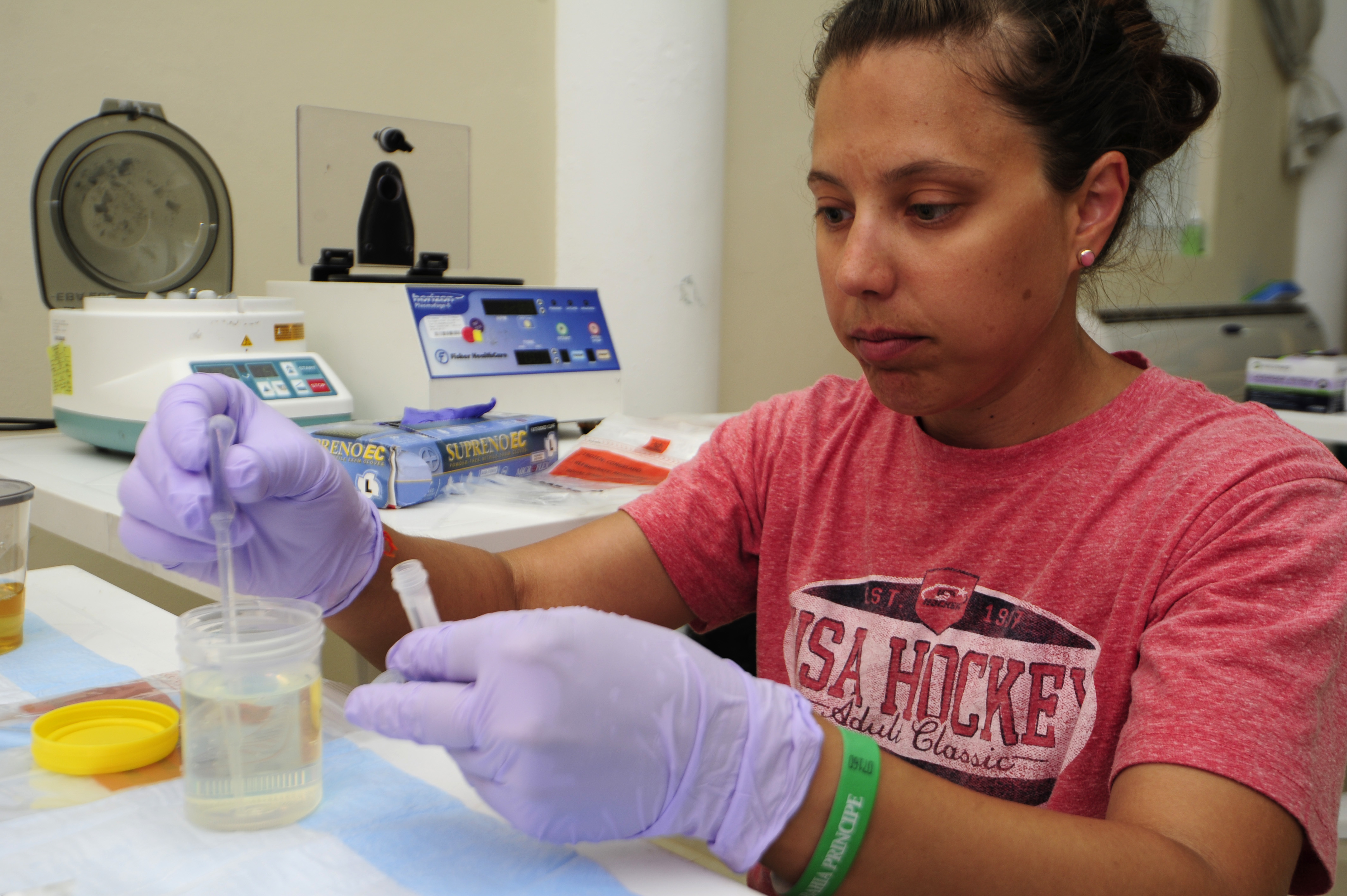Book:The Comprehensive Guide to Physician Office Laboratory Setup and Operation/The clinical environment/The POL as a clinical laboratory
1. The clinical environment
The physician office laboratory (POL) is a clinical laboratory that is physician-, partnership-, or group-maintained, with the goal of diagnosing, preventing, and/or treating a disease or impairment in a patient as part of a physician practice. While definitions vary from state to state, this is a solid enough definition for broader purposes. Approximately 40 percent of all clinical laboratories in the U.S. are POLs according to Centers for Medicare and Medicaid Services statistics from May 2022.[1], suggesting they serve an important role within the current healthcare paradigm. However, there are nuances to (and evolution of) the POL that make it worthy of further discussion. This chapter addresses the clinical laboratory testing environment, with a focus on these POLs and how they differ from other clinical labs.
1.1 The POL as a clinical laboratory
The physician office laboratory (POL) is a type of clinical laboratory located in an ambulatory or outpatient care setting, usually in the physician office. A clinical laboratory specializes in testing specimens from human patients to assist with the diagnosis, treatment, or monitoring of a patient condition. That testing generally depends on one or more of three common methodologies to meet those goals: comparing the current value of a tested substance to a reference value, examining a specimen with microscopy, and/or detecting the presence of infection-causing pathogens.[2] The success of these methodologies is largely dependent upon the actions of laboratory directors, supervisors, pathologists, cytotechnologists, histotechnologists, and clinical laboratory assistants who perform and interpret analyses of patient specimens using one or more techniques.[3] Those methodologies and techniques also require a wide variety of instruments and equipment. A histotechnologist will require a microtome to prepare a specimen for an anatomical pathology examination, and blood chemistry analyses depend on sample tubes, centrifuges, and blood analyzers. More advanced clinical laboratories performing molecular diagnostics techniques will use specialty tools like fluorescence microscopes and spectrometers. And all that equipment must meet manufacturing, testing, and calibration standards to ensure the utmost accuracy of tests.[4]
However, the clinical environment of the POL is somewhat different than your average reference or diagnostic lab that receives, processes, and reports on specimens en masse. The POL is typically a smaller operation, performing simple laboratory testing that can produce useful diagnostic data cheaply and rapidly. Rather than performing advanced pathology procedures that require specific equipment and expertise, the POL typically focuses on blood chemistry, urinalysis, and other testing domains that don't require significant resources and provide rapid results. This can be seen in Centers for Medicare and Medicaid Services statistics reported in May 2022 that show 70.6 percent of non-exempt POLs in the U.S. are certified to provide Clinical Laboratory Improvement Amendments (CLIA)-waived tests[5], "simple tests with a low risk for an incorrect result."[6] These "simple tests" don't require advanced equipment and highly-trained physicians. Urinalysis reagent strips, influenza nasal swabs, and whole blood mononucleosis kits are all CLIA-waived testing devices that can be used by well-trained phlebotomists, nurses, or laboratory assistants.[7] Some POLs opt to provide more advanced testing services, however, with 17.5 percent of all non-exempt POLs holding provider performed microscopy (PPM) certificates to perform moderate-level CLIA testing.[5] This allows POLs to perform moderate complexity tests like urine sediment analysis and the determination of "the presence or absence of bacteria, fungi, parasites, or cellular elements" in a specimen.[8] However, the majority of POLs remain smaller and simpler than their diagnostic lab counterparts.
References
- ↑ "Laboratories by Type of Facility" (PDF). Centers for Medicare and Medicaid Services. May 2022. https://www.cms.gov/Regulations-and-Guidance/Legislation/CLIA/downloads/factype.pdf. Retrieved 17 May 2022.
- ↑ Garrels, Marti; Oatis, Carol S. (2014). Laboratory and Diagnostic Testing in Ambulatory Care: A Guide for Healthcare Professionals (3rd ed.). Elsevier Health Sciences. pp. 368. ISBN 9780323292368. https://books.google.com/books?id=LM9sBQAAQBAJ. Retrieved 18 April 2022.
- ↑ "Careers in Pathology and Medical Laboratory Science" (PDF). American Society for Clinical Pathology. Archived from the original on 31 October 2015. https://web.archive.org/web/20151031084059/http://www.ascp.org/pdf/CareerBooklet.aspx. Retrieved 18 April 2022.
- ↑ "Laboratory Safety Standards". American National Standards Institute. 2022. https://webstore.ansi.org/industry/laboratory-safety. Retrieved 18 April 2022.
- ↑ 5.0 5.1 Centers for Medicare and Medicaid Services, Division of Laboratory Services (May 2022). "Enrollment, CLIA exempt states, and certification of accreditation by organization" (PDF). http://www.cms.gov/Regulations-and-Guidance/Legislation/CLIA/Downloads/statupda.pdf. Retrieved 17 May 2022.
- ↑ Centers for Disease Control and Prevention (6 August 2018). "Clinical Laboratory Improvement Amendments (CLIA): Test complexities". https://www.cdc.gov/clia/test-complexities.html. Retrieved 18 April 2022.
- ↑ "CLIA - Clinical Laboratory Improvement Amendments - Currently Waived Analytes". U.S. Food and Drug Administration. 18 April 2022. https://www.accessdata.fda.gov/scripts/cdrh/cfdocs/cfClia/analyteswaived.cfm. Retrieved 18 April 2022.
- ↑ Kulczycki, Michael (1 April 2014). "Focusing on Provider-Performed Microscopy Procedure Requirements for Ambulatory Health Care". Ambulatory Buzz. The Joint Commission. Archived from the original on 01 March 2016. https://web.archive.org/web/20160301192508/http://www.jointcommission.org/musingsambulatory_patient_safety/focusing_provider_microscopy_procedure_req_ambulatory_health_care/. Retrieved 18 April 2022.










